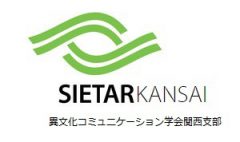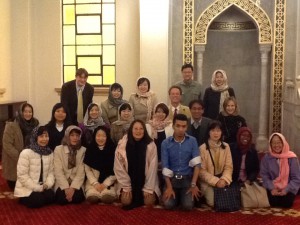Speaker: Nikki Nojima Louis, Ph.D., playwright, performer and educator
Date: August 10, 2013 (Saturday)
Time: 14:00-17:00
(Dinner after the session at a Thai/Balinese restaurant. Reservations
required by August 2. Contact fujimotodonna@gmail.com)
Venue: Takatsuki Shiritsu Sogo Shimin Koryu Center,
(1 minute walk from JR Takatsuki Station) Tel.0726-85-3721
http://www.city.takatsuki.osaka.jp/db/kurasu/images/koryu.gif
Fee: Free for members and students; 500 yen for non-members
Language: English
Description of presentation:
Nikki Nojima Louis is a Japanese American playwright, educator and performer who is bringing her cast to Japan for the very first time in order to perform the oral history play called “Breaking the Silence: The Japanese American Experience.” This play debuted first at the University of Washington in 1986, and since then it has been performed throughout the U.S. The play comes to Japan for the first time with performances in Hiroshima on August 1-3, at Aichi University on August 4 and back to Hiroshima on August 5. The group will be present at the remembrance ceremony in Hiroshima on August 6.
For those who cannot attend the performance, August 10 is an opportunity to get an overview of the play, and Nojima Louis will explain the whole process using slides and videoclips. “Breaking the Silence” utilizes Readers Theater where oral histories, tanka poems, and music are combined to reveal the experiences of three generations of Japanese Americans.
Participants will have the opportunity to experience different aspects of Readers Theater and many of the basic techniques to be presented are based on the book written by Nojima Louis’s co-director, Jan Maher, a member of the collective called, Local Access for the Arts-in-Education. This session will be of use for anyone interested in history, drama, and education.
Dr. Nikki Nojima Louis was born in Seattle, spent her early childhood in America’s World War II prison camps, and grew up in Chicago. As a teenager in the 1950s, she was the only non-white member of a dance company that toured to the segregated South. She has a Masters degree in Creative Writing from the University of Washington and a Ph.D in Creative Writing from Florida State University.
Nikki is not just an academic. In 1985 she was a member of Word of Mouth, a multicultural women’s peace show, performing throughout the Pacific Northwest, and in 1986 she wrote “Breaking the Silence.” In 1989 she traveled to Tashkent, Uzbekistan as a member of the Seattle-Soviet Theatre Exchange performing with a company of Russian, Uzbek, and Korean artists. Just a few of her performance credits include “Women Who Write Too Much,” “Most Dangerous Women,” “Shirley Temple of the Concentration Camp,” and “I am Furious Yellow.” She has taught at the University of Washington’s Women’s Center and co-managed Local Access, an arts-in-education collective. She is currently a Program Specialist in the Asian American Studies Department of the University of New Mexico.

